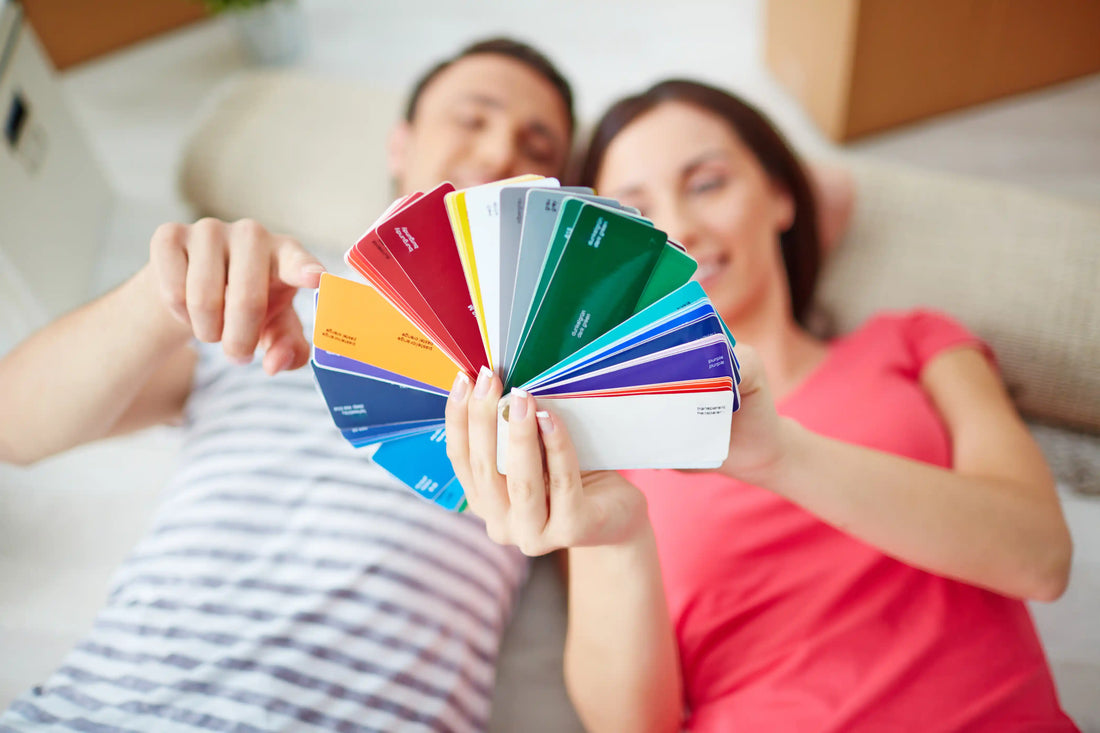Got yourself a cozy space, yet want to make it feel spacious? Your choice of paint Colour and finish can help achieve that effect. As it’s no secret, using sheen makes the room look bigger than it is. Let us explore how and what shades achieve these effects, while making the space look beautiful.
Creating visual interest with striking colours while also having an illusion of a bigger room is to paint an accent wall with bright colours like tomato red, bright yellow, or airy blue, while maintaining a dominance of the best colours for small rooms like ivory and off white on the rest of the walls. This gives an interesting and spacious impact. This blog serves as a helpful guide for small-space painting tips.
1. Begin with the Timeless Sorcerers: Light Hues

Light wall colours for apartments are the quiet magicians of interior design. They don’t turn the heads dramatically, yet they manage to transform the perception of space. Soft whites, muted beiges, powdered blues, and silvery greys act like mirrors for light, both natural and artificial. This reflective dance dissolves visual boundaries, creating an airy expanse that makes walls seem to step back. The result? A room that breathes, appearing far more generous in size than the measuring tape admits.
For lovers of simplicity, white remains the eternal classic. But avoid the harsh, clinical kind that feels like a hospital corridor. Choose a version warmed with creamy undertones or kissed by ivory. It lends the space softness with a glow that feels like sunlight lingering past sunset.
If you crave a tinge of personality, turn toward delicate greys or ice-tinted pastels. These shades invite calm as they settle the air, as if the room itself has sighed in relief.
You can extend your wall Colour to the ceiling. It erases visual division, tricking the eye into perceiving height. It’s a subtle sleight of hand that design experts use to make ceilings appear higher and spaces infinitely lighter.
2. Cool Tones: The Artisans of Visual Distance

Cool colours like gentle blues, dew greens, and pale lavenders carry an innate elegance. They recede effortlessly, drawing your gaze outward, stretching the space in silence. A seafoam green bedroom or a sky-washed living room creates serenity without sterility, wrapping you in a hush that feels infinite.
Pairing these shades, especially the best colours for small rooms, with natural light amplifies the illusion for home painters in Ontario. A corner that has access to sunlight, painted in soft aqua, shines like a sacred morning mist; a hint of lilac catches light and scatters it as though the air itself has turned to Colour. Even sage green, blended with wooden furniture and muted decor, expands the atmosphere, lending calm and continuity.
Cool tones are like an open horizon, allowing rooms to breathe, letting depth replace density. They are the established light wall colours for apartments.
3. Monochrome: The Silent Architect of Flow

Contrast, though dramatic, can slice a small space into visual fragments. To make a compact room feel cohesive, choose a monochromatic palette. A palette that is not with identical shades, but a family of tones that blend in quiet harmony.
Imagine walls painted a muted grey-blue, trimmed with slightly lighter hues, and balanced with drapery a tone deeper. This tonal symphony removes visual interruption, smoothing transitions between surfaces. The result is seamless; your eyes move without pause, and the space feels continuous rather than confined.
You’re essentially removing visual clutter. The eye reads this unity as openness, an uninterrupted field that feels wide enough to exhale in.
4. The Finish Factor: When Texture Shapes Perception

Colour alone doesn’t define a room’s atmosphere; its finish plays its own part in this subtle alchemy. Satin and eggshell finishes carry a gentle sheen that reflects light just enough to make walls glow softly, while still keeping them approachable.
High-gloss finishes, though tempting, can betray flaws, bouncing light sharply and calling attention to uneven surfaces. They’re best reserved for accents like trims, moldings, or decorative highlights.
If your aim is a balance between warmth and spaciousness, eggshell finishes strike the perfect chord. They lend walls a luminous quality that feels alive, inviting light to move, not glare.
Also Read: Outdoor Paint Trends
No need to distance yourself from dark shades:
It is said that dark and matte walls can make the space look compact. However, most people might crave some highly pigmented shades like reds, maroon, and navy blue. You don’t need to completely omit them. Just use them thoughtfully.
To get the best results, you can pair up warm yet inviting colours like forest green or muted plum tones with beige or creamish tones can give the perfectly enticing impact. To contradict, you can also use dark-themed furniture or decor to go with lighter walls.
The craving to make the space look bigger than it is is not uncommon. To do that, you might have to keep a heavy hand over lighter shades and a sheen finish. However, that doesn’t mean that you have to make the room look just white or beige. The accent wall with a bright and striking Colour is a great option, having a decor that is colourful and suits the rest of the set up is also a great way to cheer the place up.
Also Read: How Your Paint Choices Affect Mood
FAQs
1. Which paint colours make a small room look the biggest?
Colours like White, Light Gray, Beige, and Taupe, and even soft pastels, can make the room look bigger.
2. What finish should I choose for small rooms?
Glossy finish works the best for smaller or compact areas.
3. How can lighting affect how big a painted room feels?
Appropriately bright lights can make a room feel bigger. On the other hand, those tiny disco lights make the room feel smaller.
4. Should trims and moldings match the wall Colour?
To maintain coherence, you can match or use matchable shades for trims and moldings.

